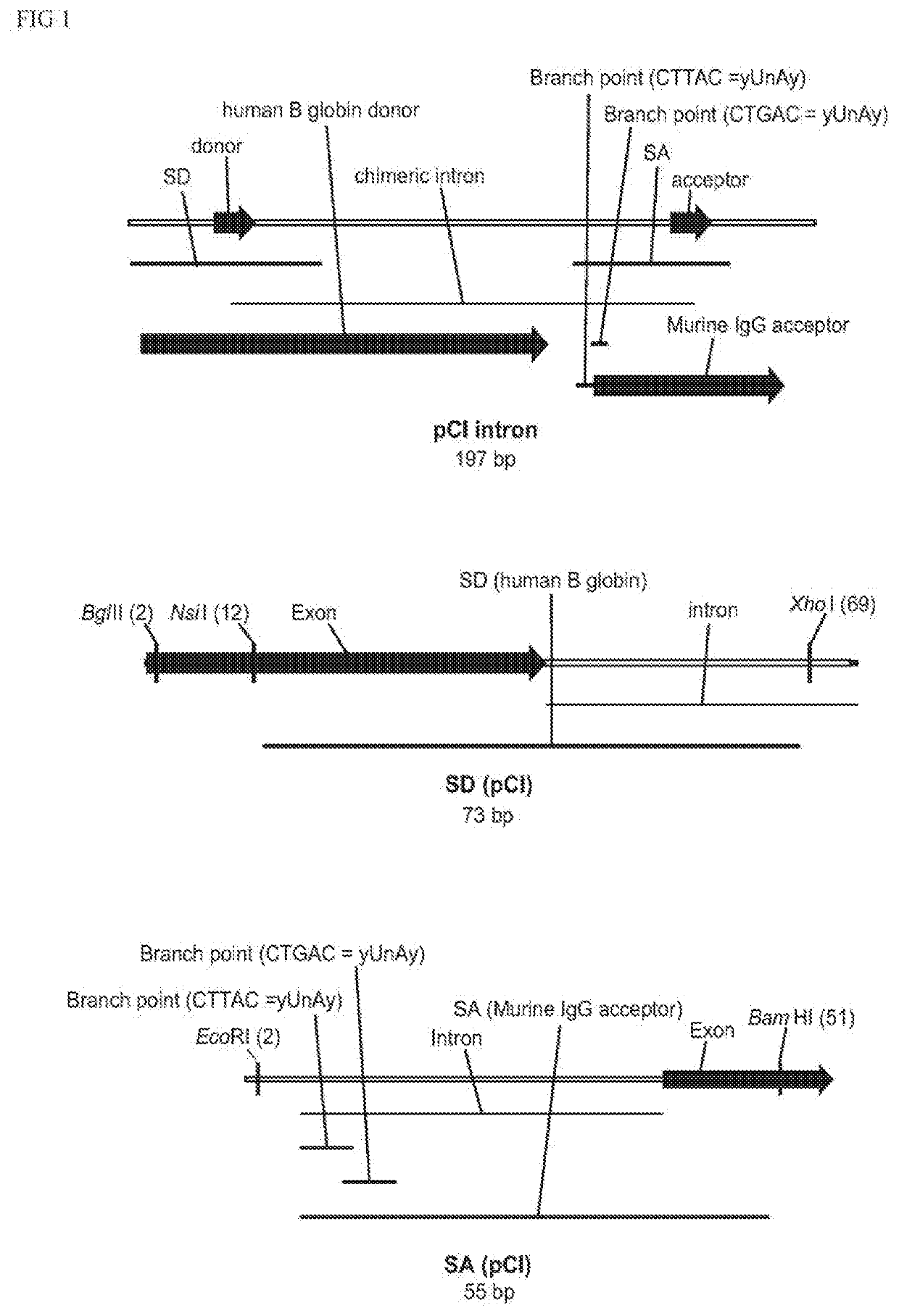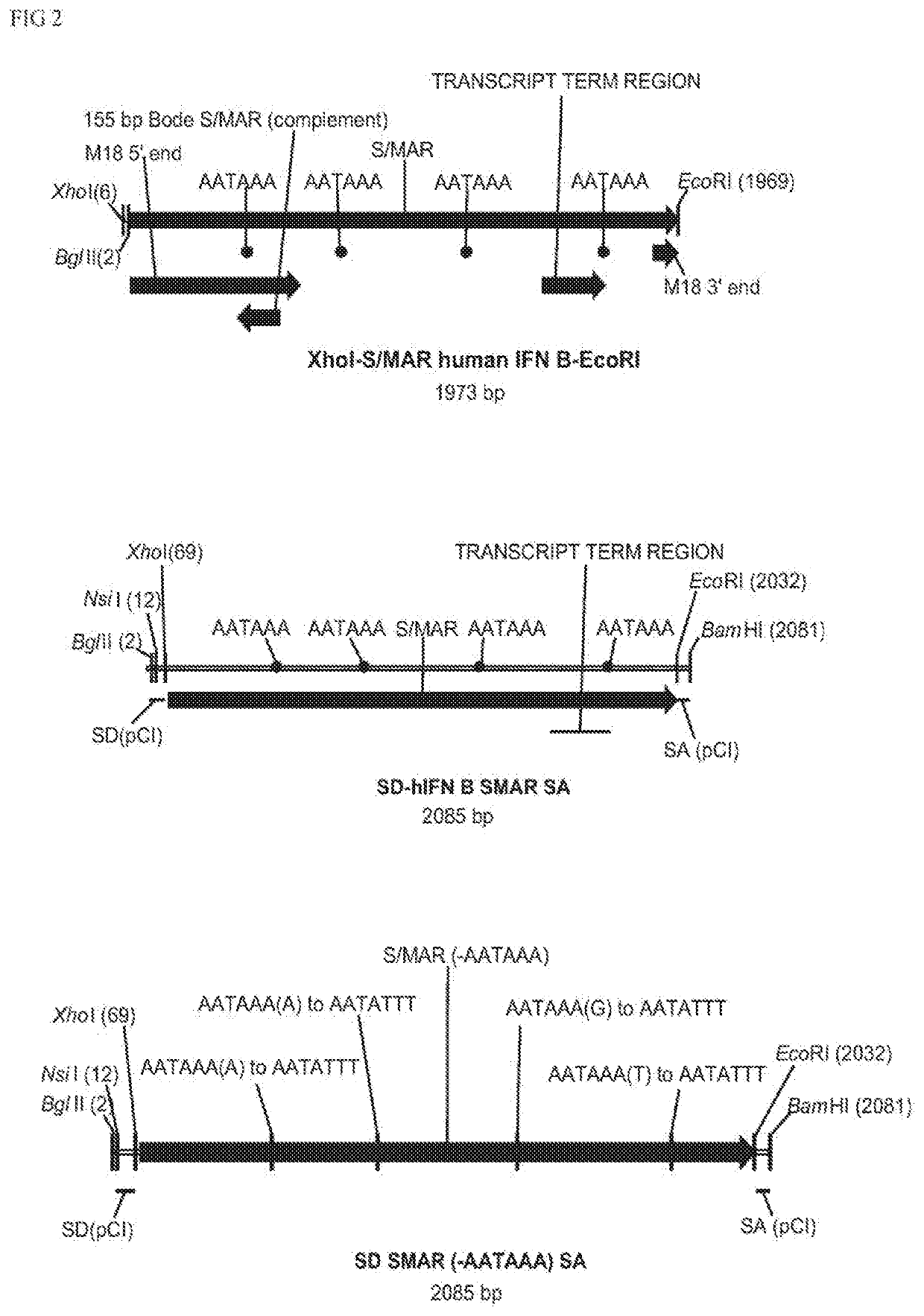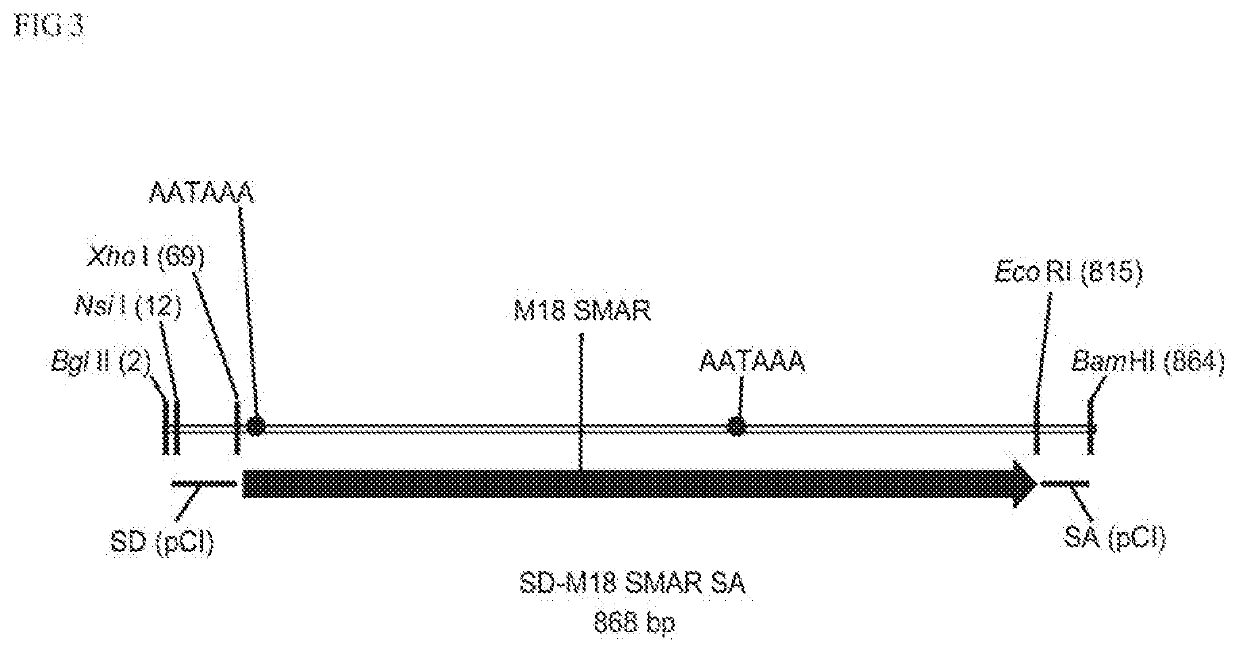Non-integrating DNA vectors for the genetic modification of cells
- Summary
- Abstract
- Description
- Claims
- Application Information
AI Technical Summary
Benefits of technology
Problems solved by technology
Method used
Image
Examples
example 1
R6K Replication Origin Plasmid Production
[0067]RNA-OUT Antibiotic Free Selectable Marker Background:
[0068]Antibiotic-free selection is performed in E. coli strains containing phage lambda attachment site chromosomally integrated pCAH63-CA 7 RNA-IN-SacB (P5 / 6 6,6) as described in Williams, Supra, 2008. SacB (Bacillus subtilis levansucrase) is a counter selectable marker which is lethal to E, co cells in the presence of sucrose. Translation of SacB from the RNA-IN-SacB transcript is inhibited by plasmid encoded RNA-OUT. This facilitates plasmid selection in the presence of sucrose, by inhibition of SacB mediated lethality.
[0069]R6K Origin Vector Replication and Production Background:
[0070]The R6K gamma plasmid replication origin requires a single plasmid replication protein π that binds as a replication initiating monomer to multiple repeated ‘iteron’. Use of a conditional replication origin such as R6K gamma that requires a specialized cell line for propagation adds a safety margin s...
example 2
tor Construction
[0075]The pNTC-NP1, pNTC-NP2, pNTC-NP3, pNTC-NP4, pNTC-NP5, pNTC-NP6, pNTC-NP7, vectors encode the R6K gamma origin-RNA-OUT bacterial replication-selection region (SEQ ID NO:8) cloned into the polylinker region of a pUC57 based vector. The pNTC-3′CpG NP1 vector encode the 1 CpG R6K gamma origin-2 CpG RNA-OUT bacterial replication-selection region (SEQ ID NO:9) cloned into the polylinker region of a pUC57 based vector. Each vector has different flanking restriction sites that can be used to retrofit a target vector to R6K replication-RNA-OUT selection. The 5′ and 3′ polylinker sequences flanking the R6K-RNA-OUT insert in the pNTC-NP 1-7 vectors and pNTC-3×CpG NP1 are shown in Table 1.
TABLE 1pNTC multiple cloning site flanked R6K Origin-RNA-OUT selection marker vectorsRNA OUTRNA-OUT 3′R6K 5′ flankingtrpAR6KLinkerSelectionflankingVectorrestriction sitestermoriginsitemarkerrestriction sitepNTC-NF1EcoRI, SacI, KpnI,YesSEQ IDDraIIIaSEQ IDNheI BamHI,(SEQ IDNruI, NsiI, XmaII...
example 3
tor Expression after Transient Transfection
[0080]Adherent HEK293 (human embryonic kidney) and A549 (human lung carcinoma), cell lines were obtained from the American Type Culture Collection (Manassas, Va., USA). Cell lines were propagated in Dulbecca-s modified Eagle's medium / F12 containing 10% fetal bovine serum and split (0.25% trypsin-EDTA) using Invitrogen (Carlsbad. Calif., USA) reagents and conventional methodologies. For transfections, cells were plated on 24-well tissue culture dishes, plasmids were transfected into cell lines using Lipofectamine 2000 following the manufacturer's instructions (Invitrogen).
[0081]Total cellular lysates for EGFP determination were prepared by resuspending cells in cell lysis buffer (CellLytic M, Sigma, St Louis, Mo., USA), lysing cells by incubating for 30 min at 37° C., followed by a freeze-thaw cycle at −80° C. Lysed cells were clarified by centrifugation and the supernatants assayed for EGFP by FLX800 microplate fluorescence reader (Bio-Tek,...
PUM
| Property | Measurement | Unit |
|---|---|---|
| Fraction | aaaaa | aaaaa |
| Time | aaaaa | aaaaa |
| Current | aaaaa | aaaaa |
Abstract
Description
Claims
Application Information
 Login to View More
Login to View More - R&D
- Intellectual Property
- Life Sciences
- Materials
- Tech Scout
- Unparalleled Data Quality
- Higher Quality Content
- 60% Fewer Hallucinations
Browse by: Latest US Patents, China's latest patents, Technical Efficacy Thesaurus, Application Domain, Technology Topic, Popular Technical Reports.
© 2025 PatSnap. All rights reserved.Legal|Privacy policy|Modern Slavery Act Transparency Statement|Sitemap|About US| Contact US: help@patsnap.com



